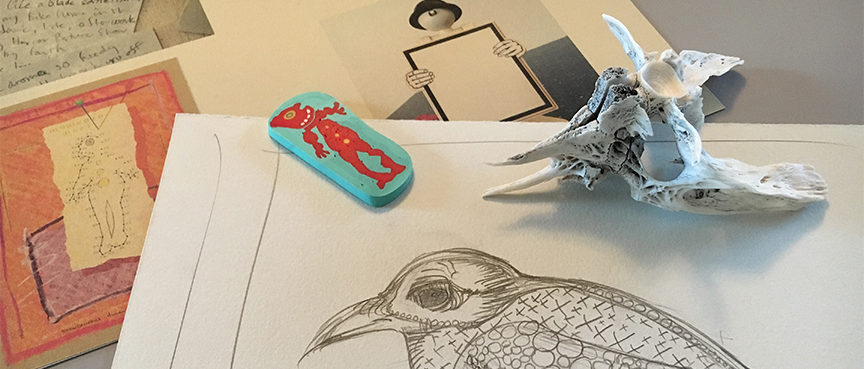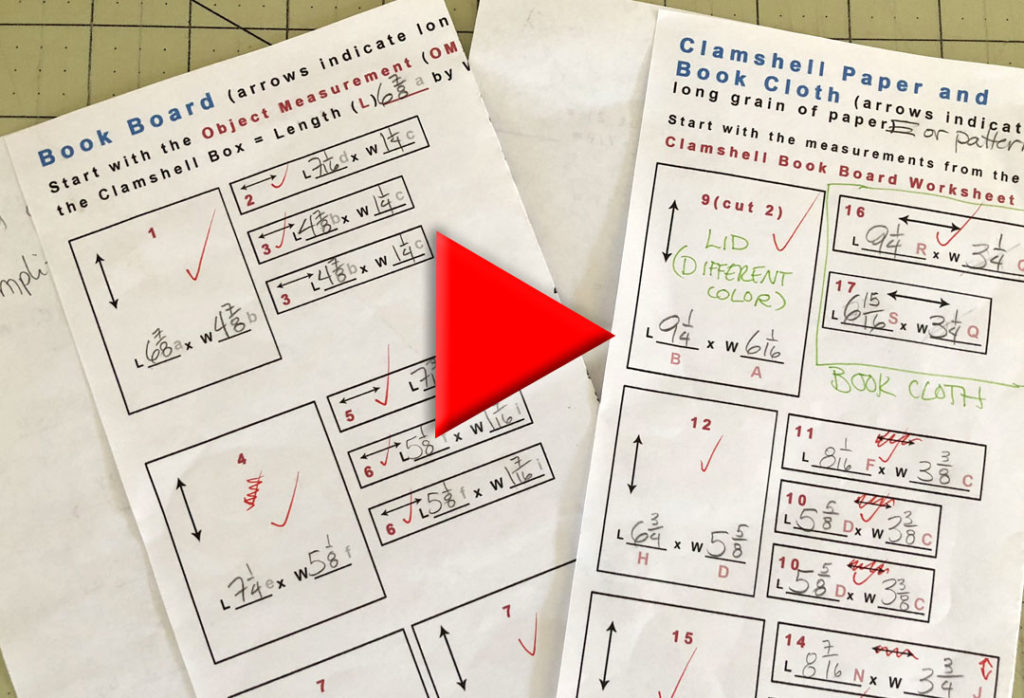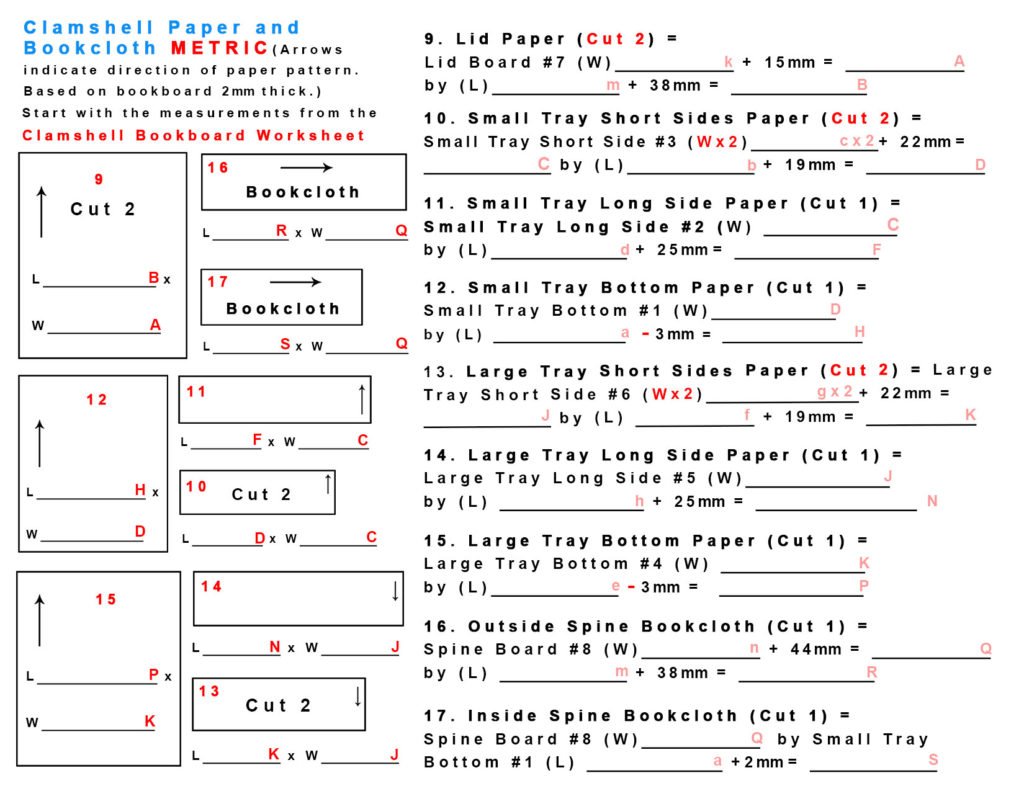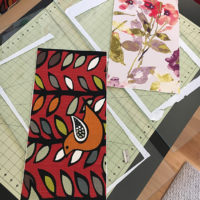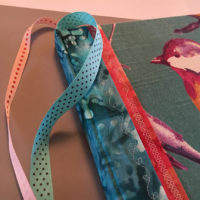Clamshell Box Worksheets
Here’s some video help for filling out the 2 worksheets that you can download below. Click on each image which will take you to a download page. The video shows instructions for filling out the worksheets using Imperial measurements (inches) but you can follow the same process if you are filling out the Metric worksheets. But you get to skip the fractional math :).
Download the worksheets
These each have separate download pages. Click on the first one, go to that download page and download it from there. How you do that final step of downloading will depend on your operating system and the browser you’re using. I’m on a Mac using Safari, so I Control-click on the image and get a pick menu allowing me to “Save Image to the Desktop.” Your final step may vary.
Imperial Measurements (Inches):
1. Bookboard
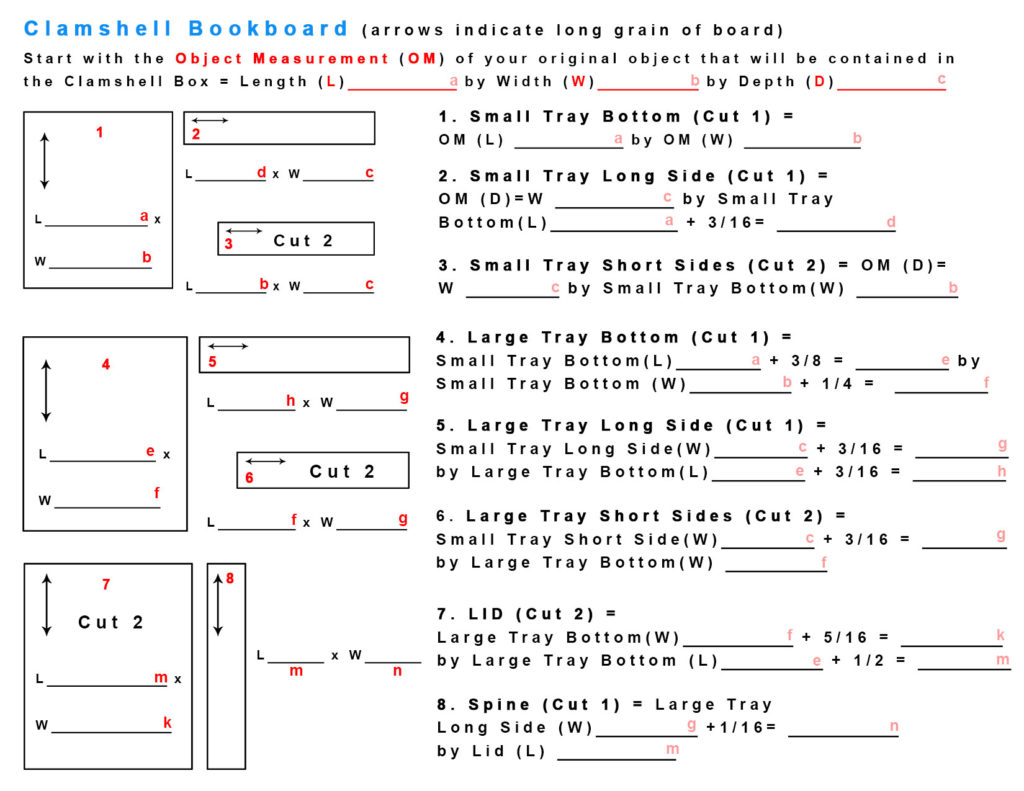
2. Paper and Bookcloth
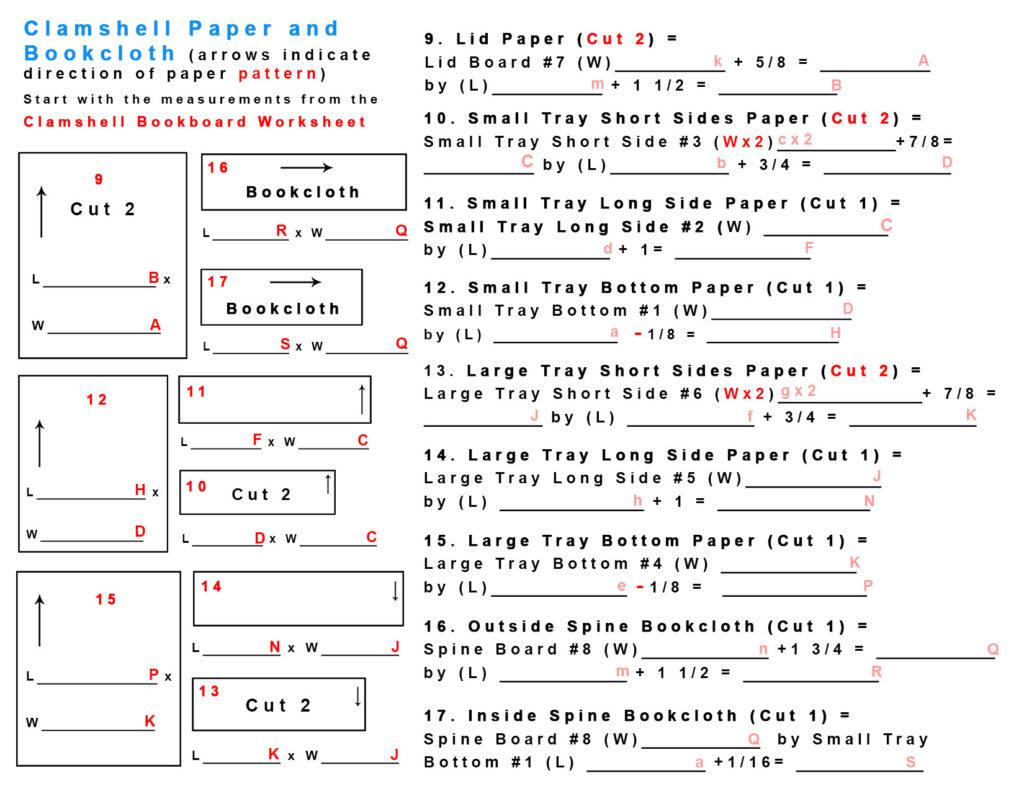
Metric Measurements (millimeters):
1. Bookboard
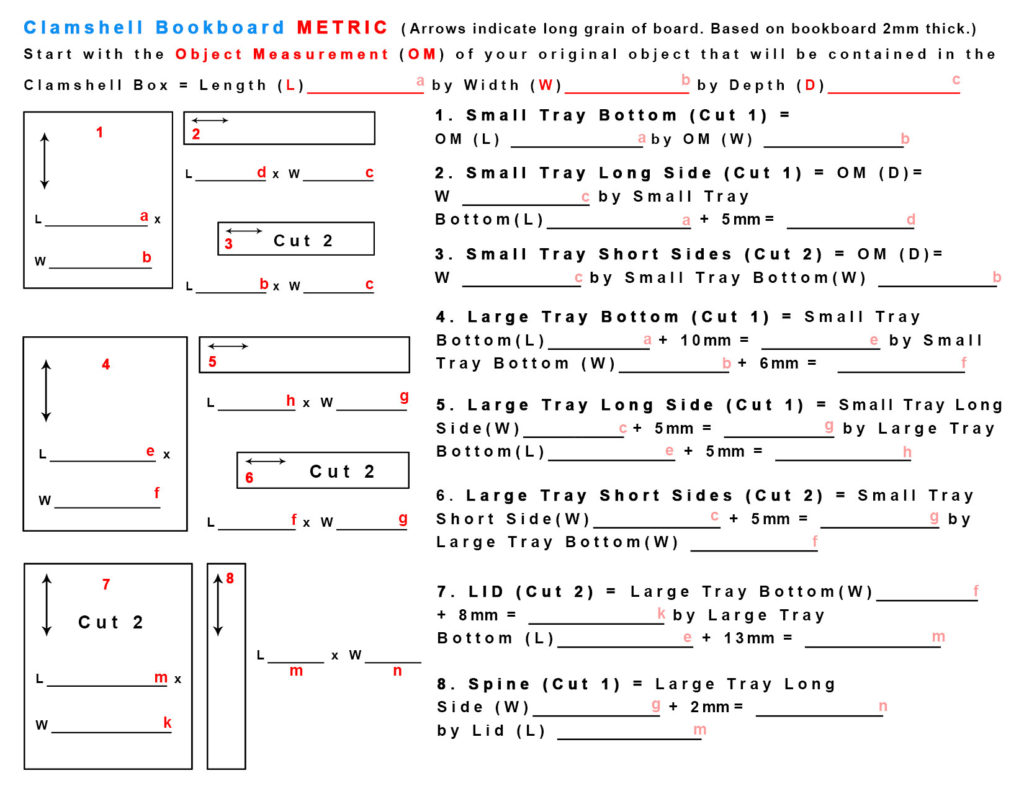
2. Paper and Bookcloth
Use an accurate ruler
Besides the worksheets, the one other tool that you might need is a ruler that shows 16ths of an inch (if using the Imperial worksheets) or millimeters (if using the Metric worksheets). This will help with the initial measurements of the object that you want to keep in the clamshell box, so you can fill out the worksheets, as well as with measuring and cutting the materials you’ll make the box out of.
The ultimate goal with these worksheets is to have the left sides fully filled out, giving you a road map for cutting all of the materials needed to create this box.
Start with the book board measurements
Start with the “Clamshell Book Board” worksheet and the object you are building the box for. Be very precise with the measurements of the original object, down to the 16th of an inch, and then place these measurements in the Length, Width and Depth blanks at the top of this worksheet. It’s important that these are accurate because every other measurement is dependent on these three figures.
(By the way, if my depth measurement seems off it’s because I intend to make a second book to go in this box, so I’ve doubled that particular measurement.)
Fill in the blanks
So from here you just need to do a little math and fill in the blanks. Start by looking for any lower case As, Bs or Cs, since you now know what those are and can fill those in without doing any math. Once you fill those in you’ll need to start doing a little fractional math (if using the Imperial Measurements worksheet) to fill in the rest of the blanks. Most of the following instructions are to help those of you who are fractionally impaired. 🙂 The Metric worksheets are pretty straightforward.
Start by solving for ‘d’
So, the next information we need to find out is ‘d’. The worksheet says the Small Tray Bottom (a) + 3/16ths of an inch will equal ‘d.’ While you are filling out the worksheet you really don’t have to pay any attention to the text, just the letters.
This is where you have to do some simple math. For those of you who don’t remember fractions, here’s a quick refresher:
A simple fraction refresher
When you need to add two fractions together the bottom part – the denominator – has to be the same. If it isn’t, you need to make it so it is. The very simplest way to do this is to multiply the two denominators, but this isn’t the most efficient way. If you did that with this set of fractions you’d end up with a denominator of 128. Not really very useful.
Get a common denominator
The most efficient way is to figure out what you need to do to the smaller denominator to make it the same as the larger one – in this case just multiply it by 2. You have to multiply the top and bottom of 7/8ths by 2, which gives you 14/16ths. Now you can add the numerators together, giving you 17/16ths.
Add and reduce
The fraction works fine like that but will probably make more sense to you when you go to measure your bookboard if you reduce it. 17/16ths is larger than 1, so you take the 1 out – the 16/16ths, add it to your other whole number giving you 7 instead of 6, and leaves you with 1/16th. Voila. You have your solution. D = 7 and 1/16th.
Fill in the value for each letter
Fill in all of the ‘d’ blanks, and then move on to the next letter. By the way, you’ve probably noticed that the numbers relate to the board pieces, so that makes it easy to cross-reference.
Finish the first worksheet and start on the second one
So, work your way through this first worksheet, just like this, filling in all of the blanks. Once you’ve finished this worksheet, start on the next worksheet for the Paper and Bookcloth measurements.
Fill in all of the lower case letter values first
All of the lower case letters on this worksheet will be values that come from the previous worksheet, so you could start by filling all of those in if you want, or just fill them in as you go. All of the upper case letters are the new measurements that you’ll be solving for.
Do the worksheets twice, just to be sure 🙂
Once you’ve worked through both of these worksheets you should be ready to cut your materials. A word to the wise, though: I’m sure you’ve heard the old saying “Measure twice, cut once.” That advice applies here.
While I’m pretty confident of my math skills, I always do these worksheets twice, and then compare the results. I have on occasion discovered a math error this way and saved myself a lot of irritation by finding it out first, before I have a piece of something with glue all over it that doesn’t seem to fit quite right.
So those are the worksheets. They should help you make any size clamshell box you want.
